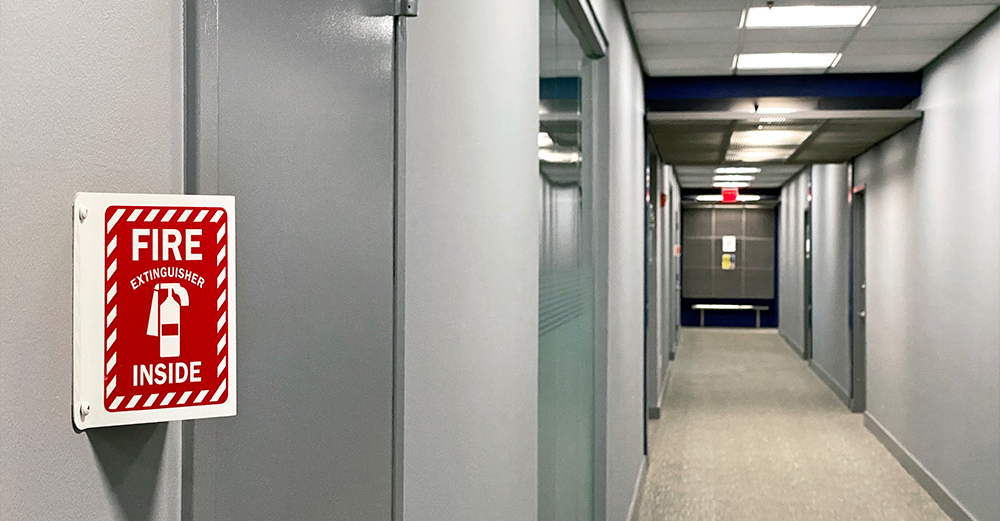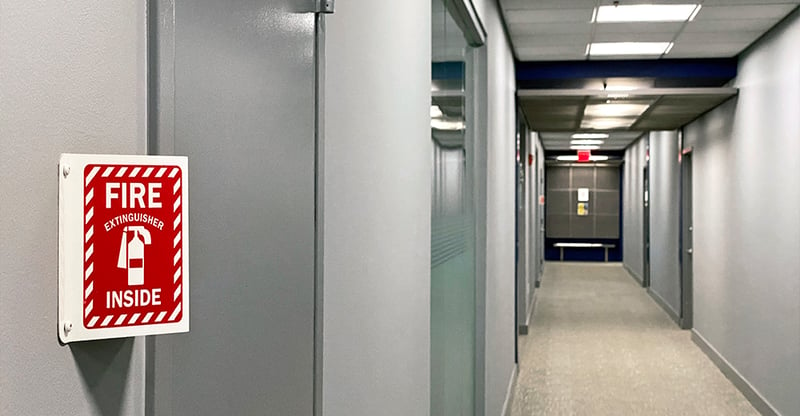OSHA Fire Prevention Plans

UTICA NATIONAL RISK MANAGEMENT ALERT

The Occupational Safety and Health Administration (OSHA) requires employers to establish a written fire prevention plan (FPP), as outlined in the General Industry Standard 29CFR1910.39, Exit Routes, Emergency Action Plans, and Fire Prevention Plans. The FPP will vary by occupancy, as the fire hazards in a business office are different from those in a manufacturing plant. This Client Handout describes key elements that should be addressed when developing the plan. The OSHA regulation should be consulted for specific requirements.
Workplace Fire Hazards
Each worksite will have site-specific fire hazards, based on the type of processes, equipment, and material used. The worksite should be surveyed to determine the hazards present and the controls required for these hazards. Identified hazards and their related controls should be documented in the FPP plan based on all the hazards present.
Fuel Sources
Any number of fuel sources may be present in a worksite. Some typical fuel sources and related controls that should be addressed in the FPP include:
- Compressed gases, including liquefied petroleum gas (LPG), propane, and acetylene gas used for welding, should be stored in a separate area, away from ignition sources, and secured to prevent tipping and damage. To reduce the potential for loss, cylinders should be stored in accordance with NFPA 58, Liquefied Petroleum Gas Code, published by the National Fire Protection Association (NFPA).
- Flammable and combustible liquids, such as degreasers, fuel oil, gasoline, and lubricants, should be stored in accordance with NFPA 30, Flammable, and Combustible Liquids Code. Flammable and combustible liquids should be kept in covered containers when not in use. Spills should be cleaned up promptly.
- Trash materials storage should be addressed in the housekeeping and storage procedures, including strict guidelines in dealing with the accumulation of flammable and combustible materials and residues. Trash should be removed at least daily to an outside trash dumpster or otherwise disposed of.
- Idle pallets should not be stored on edge as this will create a vertical flue space that allows for rapid burning. Pallets should be stored flat stacked, limited in height, and protected in accordance with NFPA 13, Standard for the Installation of Sprinkler Systems.
Ignition Sources
Procedures for controlling workplace ignition sources, such as smoking, welding, and cutting, should be addressed in the FPP.
- If cooking hazards are present, the FPP should provide information on how cooking appliances, exhaust hoods, grease removal devices, exhaust ductwork, exhaust fans, dampers, and other auxiliary or ancillary components or systems are maintained. Cooking appliances should be inspected on a regular basis - monthly for solid-fuel cooking appliances, quarterly for high-volume cooking operations, semiannually for moderate-volume cooking operations, and annually for low-volume cooking operations.
- The electrical safety practices of the workplace, including the use of a qualified electrician to perform regular inspection of the electric systems. Electrical conductors, outlet boxes, and junction boxes should be properly secured, covered, and have no evidence of overheating. An adequate number of electrical outlets/circuits should be provided to avoid overloading of circuits. The use of extension cords should be prohibited. Electrical panels and branch circuit disconnects should be freely accessible at all times.
- The FPP should identify all heating and cooling systems, the locations of the controls for such systems, and identify basic safety controls and procedures. Air circulation systems should be designed to automatically shut down in the event of a fire.
- The FPP should prohibit smoking in all buildings. If smoking is permitted, designated smoking areas should be established and “No Smoking” signs should be posted in all other areas of the facility.
- The FPP should identify any hot work operations, such as welding, cutting, etc. Welding and cutting operations present a significant ignition source and should comply with NFPA 51B, Standard for Fire Prevention During Welding, Cutting, and Other Hot Work. Ideally, such operations should be performed in areas separated from other operations by firewalls and fire doors.
- Welding, cutting, and soldering operations should use a hot work permitting system.
- If powered industrial lift trucks are used, the FFP should include information related to their safe refueling, changing, and proper classification for a specific work environment.
Fire Protection Systems
Prompt discovery and control of fires are critical to reducing property damage. Fire detection and suppression systems should be installed and maintained in accordance with NFPA standards. The FPP should provide a general overview of the types of protective systems present and how employees should use those systems.
- The FPP should detail how the alarm system will be tested and maintained. Further, the FPP should provide a cross-reference to the facility emergency action plan (EAP), which should provide information on actions to be taken in the event of an alarm.
- The FPP should provide information relating to the types of suppression systems present and any preventive maintenance required.
- The FPP should provide a description of the extinguishers present and details on the monthly inspection and regular service procedures. The FPP should identify the person responsible for maintaining fire protection equipment.
- The FPP should identify what actions the employees are to take in the event of a fire, including if fire which, if any, employees are approved to use fire extinguishers.
- If it is necessary to take a fire suppression system out of service while business continues, the FPP should provide information on actions to be taken, notifications, and other special procedures that should be followed.
Training
Prior to assignment in the workplace, all employees should be provided with information regarding the fire hazards, detection and suppression equipment, and the control systems present. Employees whose job duties require interaction with fire protection systems should receive detailed training on the proper control and application of the fire prevention systems.
Employees who are expected to take an active role in fire suppression, such as using fire extinguishers, fire hoses, or other equipment, should receive advanced training. This training should be in accordance with the type of duties performed and the related OSHA regulations for those duties.
CH-25-86 | 11/11/19 | Copyright © 2019, ISO Services, Inc.
The information contained in this publication was obtained from sources believed to be reliable. ISO Services, Inc., its companies and employees make no guarantee of results and assume no liability in connection with either the information herein contained or the safety suggestions herein made. Moreover, it cannot be assumed that every acceptable safety procedure is contained herein or that abnormal or unusual circumstances may not warrant or require further or additional procedure.
